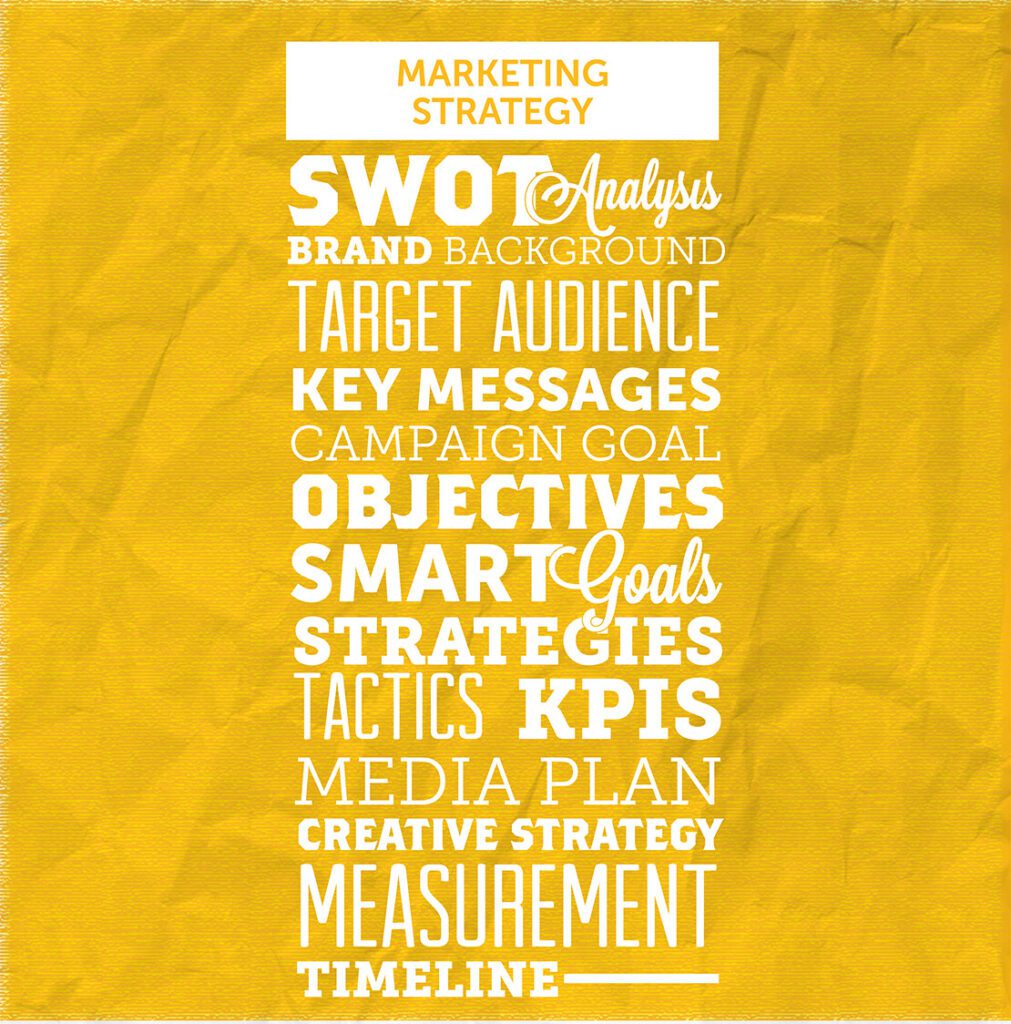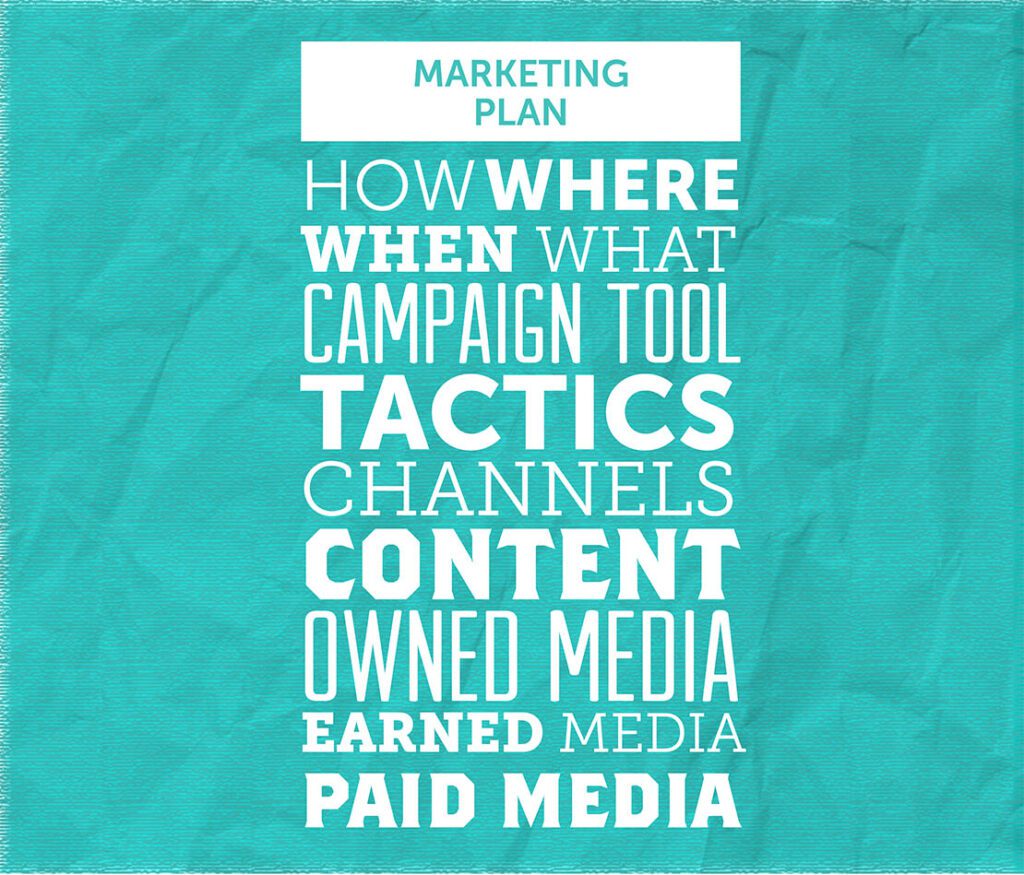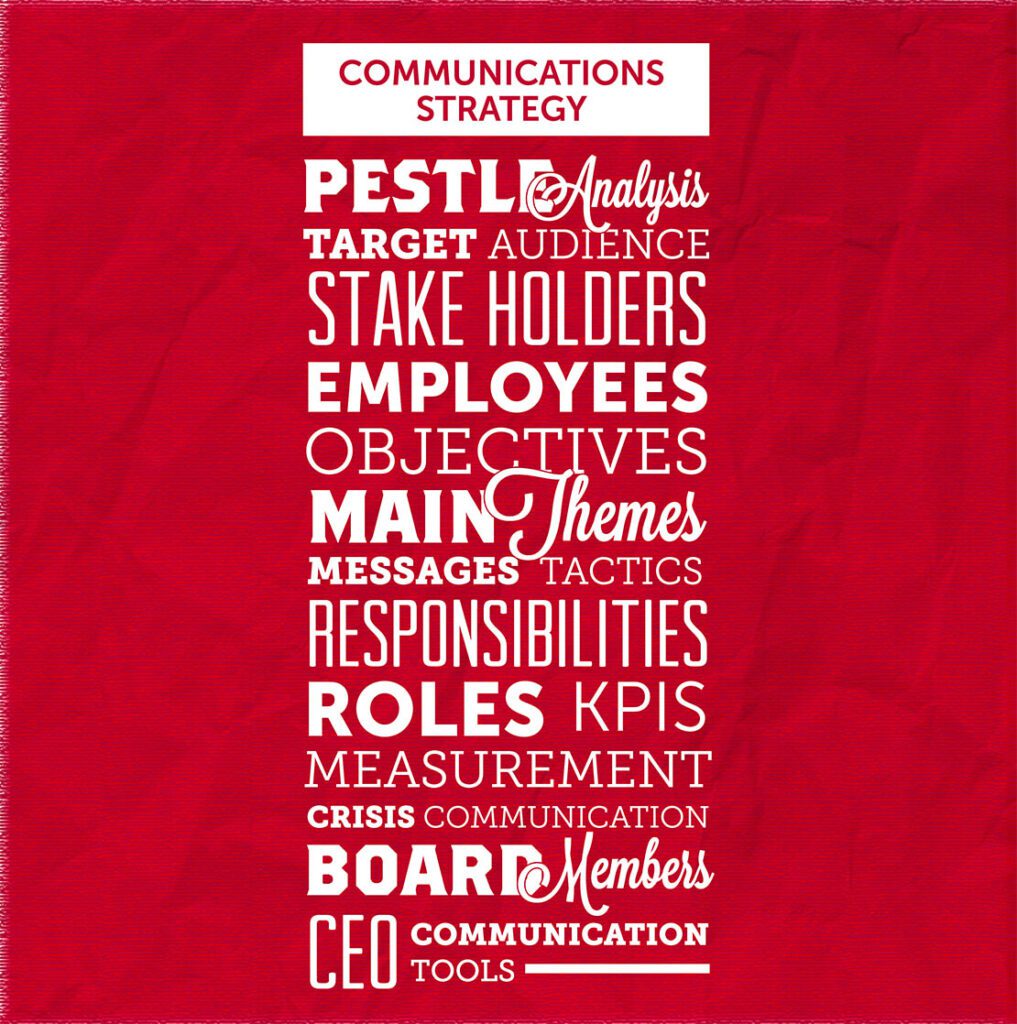
Unlike a Marketing Strategy or Marketing Plan, a Communications Strategy is an in-depth plan of an organization’s entire communication efforts. This means taking into consideration every way you communicate internally and externally with different offices. A communications strategy is many things, but it might be easier if I ran through the top three things a communications strategy is not before I tell you what a communications strategy is.
A communication strategy is NOT a marketing strategy
A marketing strategy (also often confused with a marketing plan…but I’ll get to that in a second) is a high-level strategy that details either a singular campaign or a business’ entire marketing efforts over a specific period of time.

Anywhere from a 1-12 month effort, a marketing strategy usually includes the following:
- SWOT Analysis and Brand Background
- Target Audience and Key Messages
- Campaign goal, objectives, and strategies
- Media Plan
- Creative Strategy
- KPIs and Measurement
- Timeline
Not unlike a communications strategy, a marketing strategy specifically focuses on the marketing goals of an organization has as a whole, however, these are then used in combination with the vision/mission and business goals of an organization to create marketing goals that will allow you to position the brand accordingly. A marketing strategy takes into account the competitive analysis, marketing trends, and the industry landscape.
To help you visualize what this might look like, let’s take the “campaign goal, objectives, and strategies” portion of a marketing strategy that the average Sacramento small business could use. In a marketing strategy, you use one unified goal that is then broken down into objectives and subsequent strategies and tactics. This looks something like:
Example Campaign goal:
- Increase the use of your service and offerings while also keeping your audience engaged and positioning intact over a three-month campaign.
Example objectives:
- Raise brand loyalty in Sacramento by 10% in three months.
- Grow audience engagement by 10% within three months.
Example strategies:
- Develop a social media campaign to increase the level of brand awareness through messaging around your services and offerings.
- Refresh the organization’s website and marketing materials to reflect what the target audience wants to see from the business
Basically, the best way to differentiate a marketing strategy from a communications strategy is that a marketing strategy is about either a campaign or a businesses’ marketing efforts, start to finish, over a specific period of time. It includes their target audience, potential markets, and market trends of a successful product or service.
A communications strategy is (as the name suggests) communications focused. Instead of looking at how you market a product, service, or organization, you examine and create communication strategies that allow you to build the right story for a customer and define where to put that story. A communications strategy is about communicating.
It’s not a marketing plan
You can think of a marketing plan as Marketing Strategy Lite. Containing basically all of the same elements, a marketing plan gets right to the meat of it. With only a campaign goal to guide you, a marketing plan specifically details the tactics you will take to execute a marketing strategy, not the strategy behind why you are doing it. A strategy is the why and how you need to post on a certain channel or use particular imagery in your creative. The plan is literally the plan of action that you will take to complete the strategy. A marketing plan mostly consists of a campaign goal, timeline, key milestones, channels, budget, and the course of action for each. It’s the nitty-gritty, the how’s and where’s. A plan doesn’t lay out the why’s, instead, you use the “why’s” detailed in a marketing strategy to guide the how’s and where’s. A plan does work with the strategy, together they create a purpose, rationale, and a way to move forward. But, a good plan is just that: a plan.

A communication strategy is not a social media strategy
Similar to a marketing plan, a social media strategy helps you define a plan of action over a specific period of time. However, this plan only addresses the media portion of a marketing plan. Think of this as a marketing plan, but only focusing on one element of your entire brand’s marketing. A communications strategy often contains a social media strategy within it, but a social media strategy is just a social media strategy.
As a much smaller document, this a social media strategy might define the following:
- Channel-by-channel goal and target audience
- Content types and calendar
- Key Performance Indicators (KPIs)
A communications strategy IS…
Complementary to a marketing strategy. It addresses all communications inside and outside the organization. That means it defines how you communicate with employees, leadership, stockholders, and stakeholders. It’s how you might promote your brand and company values; how you might communicate with your target audience and your competition. This can mean anyway that the company talks about anything. A communications strategy could be created for an organization as a whole or even just a specific product or service. It can be created annually, guiding an organization’s communications for the year to come or for a specific period of time. Or, a communications strategy can be used as a preventative measure for crisis management. All are created the same, just focused around different goals.

Components of a Communications Strategy:
- An audit of all materials, channels, and employees communication tools
- Goals informed by your audit
- A PESTLE analysis
- Political
- Economical
- Social
- Technical
- Legal
- Environmental
- Target Audience/Stakeholders/Employees
- Objectives
- Main themes and messages
- Tactics and Responsibilities
- Roles and Responsibilities
- KPIs
To bring this into the practical world, say you have a business with a board of directors. A communications strategy might detail:
- The communication role of board members
- What do they need to say about the business? Do they say anything at all? How do they talk about the business and where do they do that?
- The communication role of a CEO
- How do they communicate and to who externally and internally?
- What about during moments of crisis, who should communications come from?
IN NEED OF A COMMUNICATIONS STRATEGY? WE HAVE A TEAM OF MARKETING PROFESSIONALS THAT WILL TAKE YOUR COMMUNICATIONS TO THE NEXT LEVEL.
A communications strategy is in-depth, broad in subject matter, and very detailed. And it’s not just for organizations that have a board and a CEO. Any organization, from freelance to start up to small business and beyond, can benefit from a clear communications strategy. Examining all of your brand’s potential communication points can be tedious and time-consuming, but coming up with a plan that utilizes all of those tools and ensures you are talking to the right audience with the right voice and message.
Basically, a communications strategy is…
….An often overlooked crucial piece of strategy for any organization. A communications strategy could be the difference between making or breaking an organization’s reputation. You can ace your branding and have all of these amazing lines of copy, but if you don’t know what to say when something outside of your control happens, or if you aren’t sure how your brand communicates outside of itself, then you could accidentally have positioned yourself as, say, a luxury sustainable clothing brand who, when the social climate demands a statement, fails to translate that awesome branding and positioning into effective communication. Even when not utilized during crisis situations (though they are often used during these periods of time) a communications strategy helps an organization know when and where they will take a stance. Imagine your brand as a person undergoing a rigorous interview. Your brand can be asked any question! How will you know what you should say? A communications strategy would give your brand precise talking points that you could use as a reference to answer any question with the confidence that you will not accidentally alter your organization’s reputation, positioning, or branding. A communications strategy defines what is within an organization’s “scope” to talk (or not) talk about in general, anywhere, for whatever reason.
Now that you know what a communications strategy is, I urge you to take a moment and think about creating one! Could you drastically change your organization’s chances of reaching those pie-in-the-sky marketing goals if you took the time to analyze and reframe how your organization communicates? A communications strategy could be the difference between a loyal employee only ever telling their partner about all the great work they do at their job to instead knowing exactly when, what, and where, and who to tell about the innovations your organization is spearheading that will help you achieve better brand awareness, engagement, and notoriety. Every organization has many voices ready to speak up, you just need to take the time to figure out how loud, to who, and what they should be saying.
Blog

